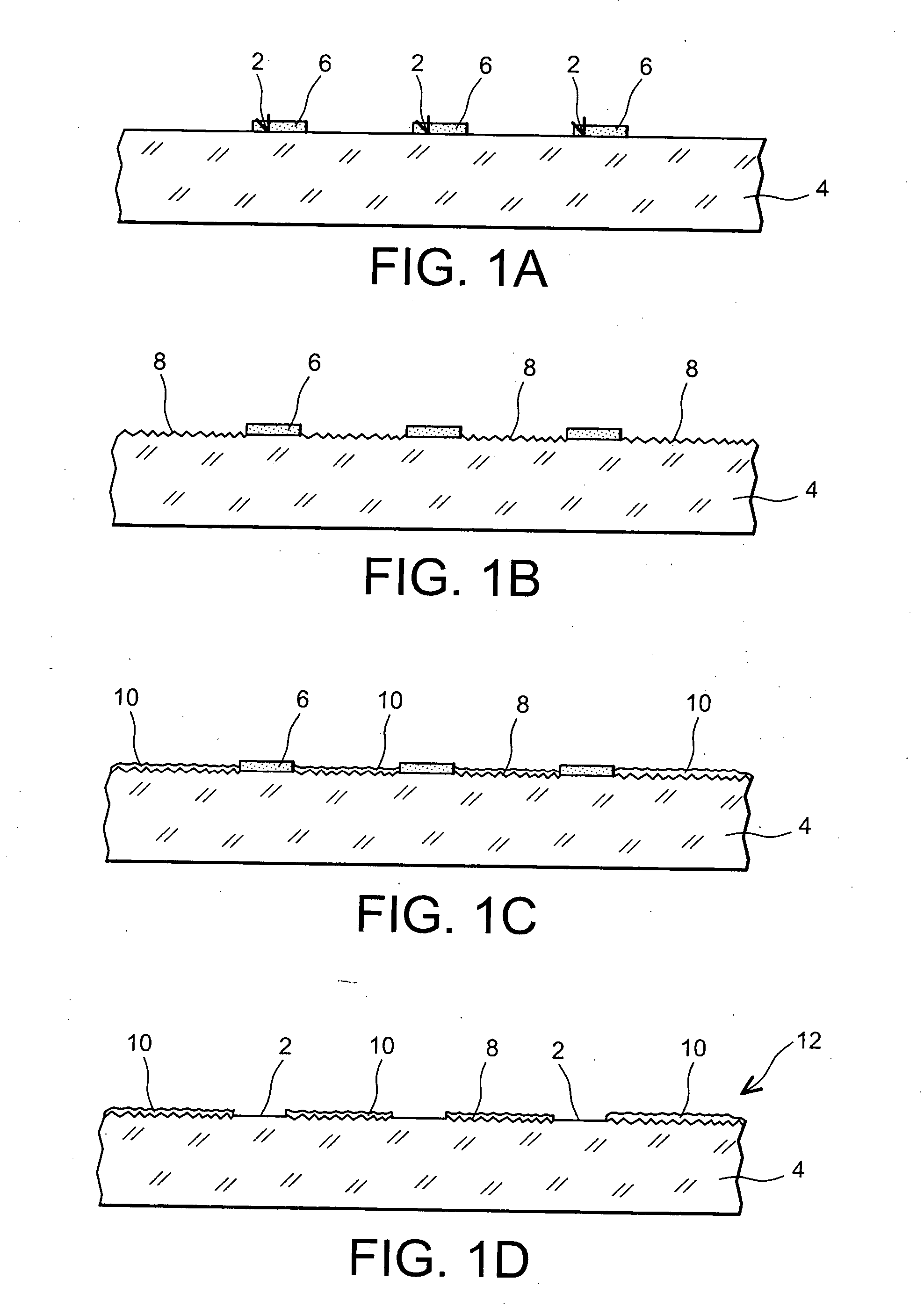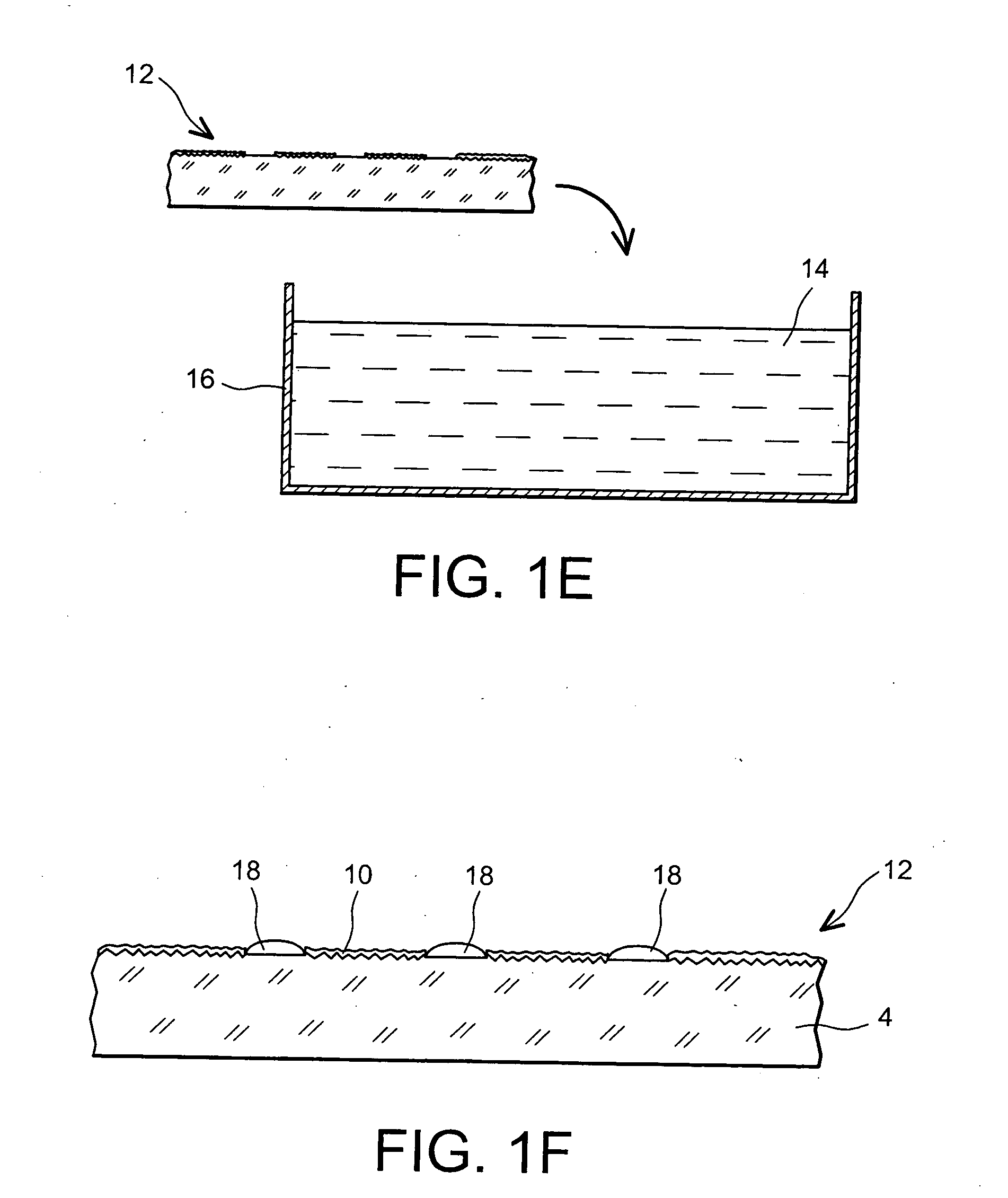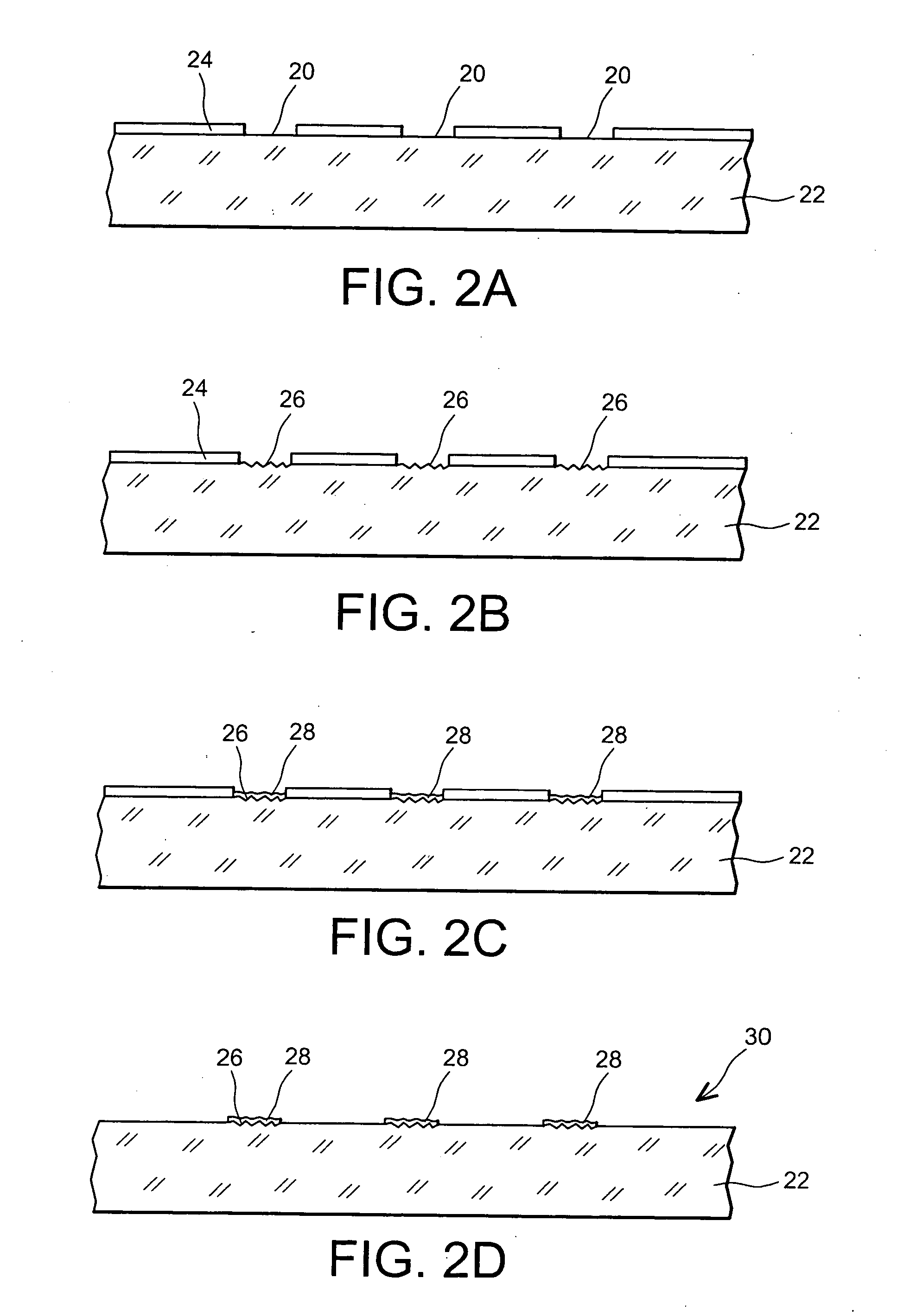Method and device for confinement of a liquid
a liquid confinement and liquid technology, applied in the field of liquid confinement, can solve the problems of inability to accurately fill the small cavity of the micro-dispenser, inability to obtain the accurate level of liquid, and inability to use the optical actuator to fill the small volum
- Summary
- Abstract
- Description
- Claims
- Application Information
AI Technical Summary
Benefits of technology
Problems solved by technology
Method used
Image
Examples
Embodiment Construction
[0045] A first example of the method, object of the invention, is now described.
[0046] In this first example, the intention is to confine an oil, for example an optical oil (an oil with a determined optical index), in areas 2 of a hydrophobic substrate 4, for example in silicon (FIG. 1A).
[0047] To do this, a photoresist layer 6 is formed on each of these areas. Next, on the surroundings of these areas, a lipophobic material layer is formed.
[0048] However, beforehand, in order to enhance the lipophobicity of these surroundings, it is preferable to form on the latter, rough features 8 (FIG. 1B), the size of which is of the order of 1 μm for example, and which are called microscopic rough features.
[0049] In order to form these microscopic rough features, one proceeds in the following way: the microscopic rough features may be obtained by etching silicon through a non-homogeneous native oxide. Microscopic rough features are thereby formed by the etching selectivity between silicon a...
PUM
 Login to View More
Login to View More Abstract
Description
Claims
Application Information
 Login to View More
Login to View More - R&D
- Intellectual Property
- Life Sciences
- Materials
- Tech Scout
- Unparalleled Data Quality
- Higher Quality Content
- 60% Fewer Hallucinations
Browse by: Latest US Patents, China's latest patents, Technical Efficacy Thesaurus, Application Domain, Technology Topic, Popular Technical Reports.
© 2025 PatSnap. All rights reserved.Legal|Privacy policy|Modern Slavery Act Transparency Statement|Sitemap|About US| Contact US: help@patsnap.com



